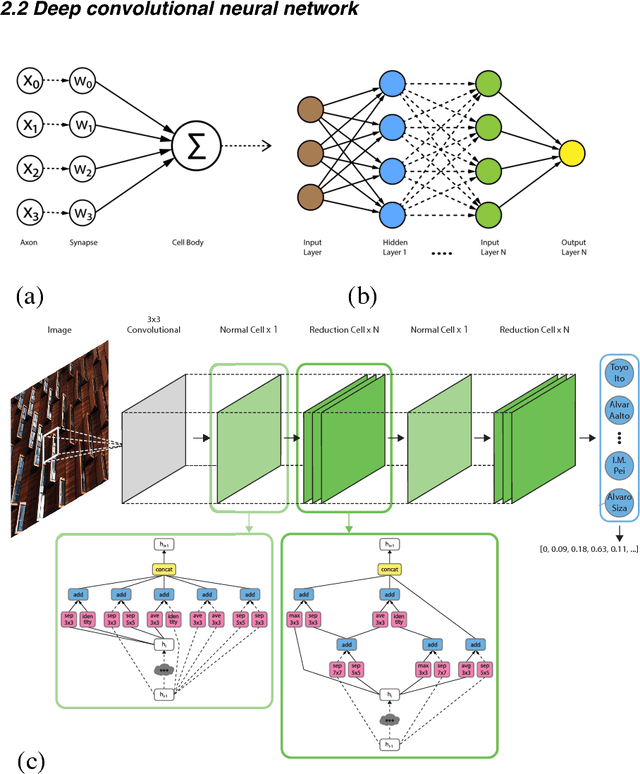Yuji Yoshimura
Quantifying urban streetscapes with deep learning: focus on aesthetic evaluation
Jun 29, 2021


Abstract:The disorder of urban streetscapes would negatively affect people's perception of their aesthetic quality. The presence of billboards on building facades has been regarded as an important factor of the disorder, but its quantification methodology has not yet been developed in a scalable manner. To fill the gap, this paper reports the performance of our deep learning model on a unique data set prepared in Tokyo to recognize the areas covered by facades and billboards in streetscapes, respectively. The model achieved 63.17 % of accuracy, measured by Intersection-over-Union (IoU), thus enabling researchers and practitioners to obtain insights on urban streetscape design by combining data of people's preferences.
Deep Learning Architect: Classification for Architectural Design through the Eye of Artificial Intelligence
Dec 03, 2018



Abstract:This paper applies state-of-the-art techniques in deep learning and computer vision to measure visual similarities between architectural designs by different architects. Using a dataset consisting of web scraped images and an original collection of images of architectural works, we first train a deep convolutional neural network (DCNN) model capable of achieving 73% accuracy in classifying works belonging to 34 different architects. Through examining the weights in the trained DCNN model, we are able to quantitatively measure the visual similarities between architects that are implicitly learned by our model. Using this measure, we cluster architects that are identified to be similar and compare our findings to conventional classification made by architectural historians and theorists. Our clustering of architectural designs remarkably corroborates conventional views in architectural history, and the learned architectural features also coheres with the traditional understanding of architectural designs.
 Add to Chrome
Add to Chrome Add to Firefox
Add to Firefox Add to Edge
Add to Edge